Setting up a writing center is an easy way to get kids excited about writing. A wonderful writing center can be set up in any classroom by following these simple steps and suggestions.
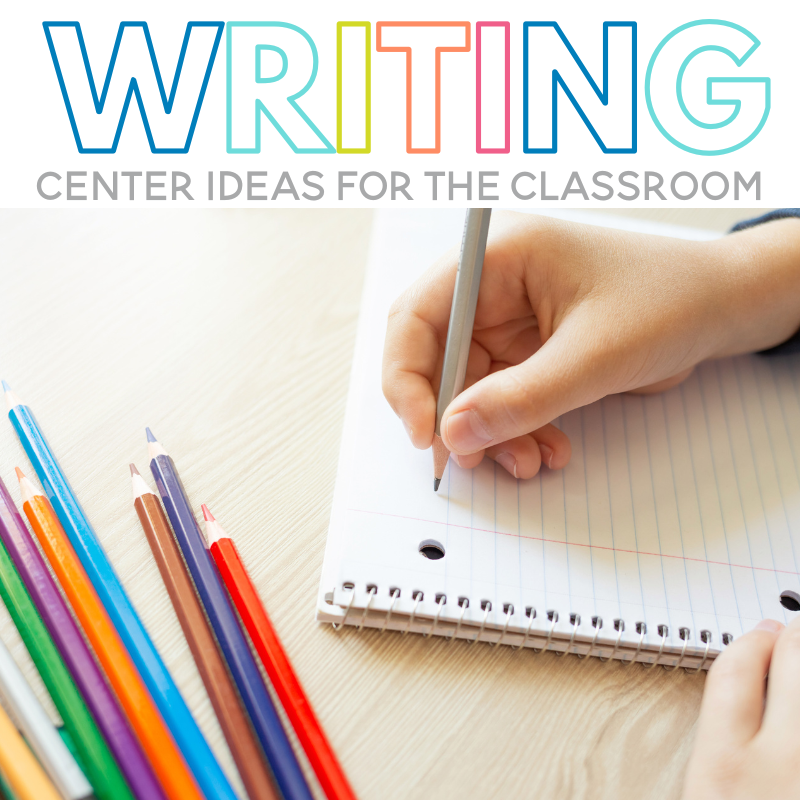
What is a Classroom Writing Center?
A classroom writing center is an area of your classroom that allows students to practice their writing skills in a fun way! Typically a writing center is set up in a specific area of the classroom and students can choose this center during station time.
How to Set Up a Writing Center
Finding the Right Spot
The first step to setting up a successful writing center is finding the right spot for it in your classroom. Ideally, you want to create a space where a few students can sit and work on their own writing projects. A table near the classroom word wall seems to usually work well.
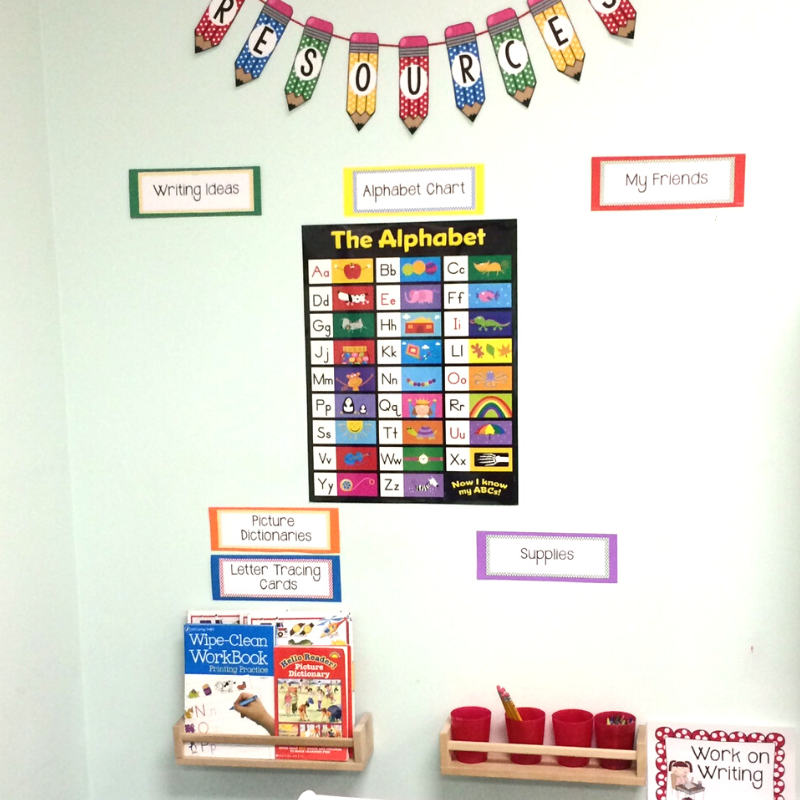
Getting Materials Ready
Next, gather all the materials students will need when working on their writing projects at the center. All of these materials do not need to be accessible at the same time. In fact, I recommend rotating out materials every few weeks to keep the writing center engaging and encourage young children to want to visit the center!
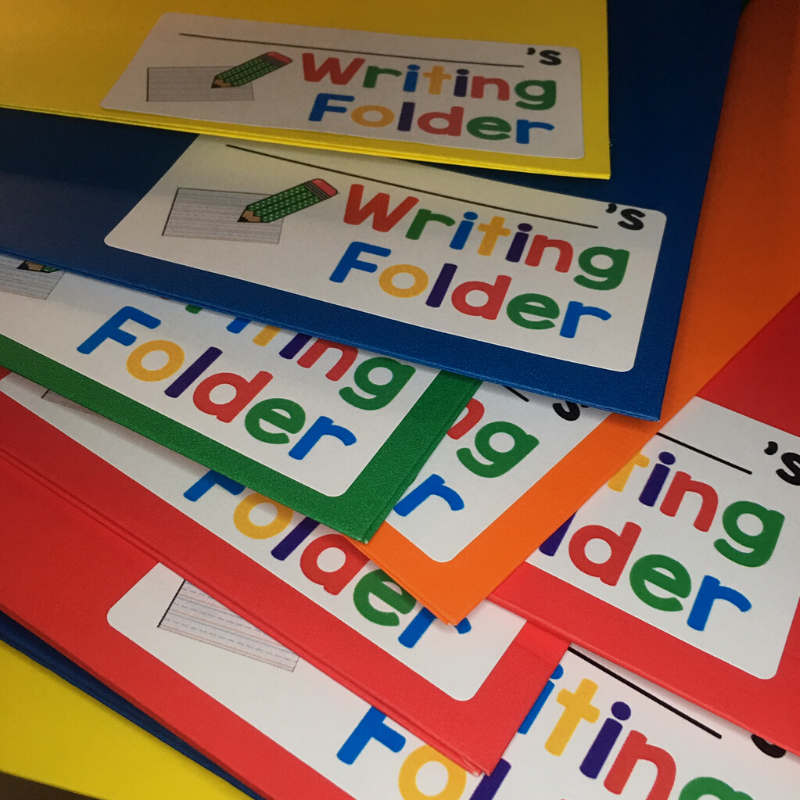
Engaging Tools and Ideas for Writing Centers
Writing Utensils
Here are a few of the writing utensils that your writing center should contain at all times:
- Crayons
- Markers (I recommend fine-tip markers because they feel similar to a pencil and have less drag.)
- Pencils
- Colored pencils
Paper
Writing centers should contain paper for students to write on. However, you need to choose the best type of paper for your students.
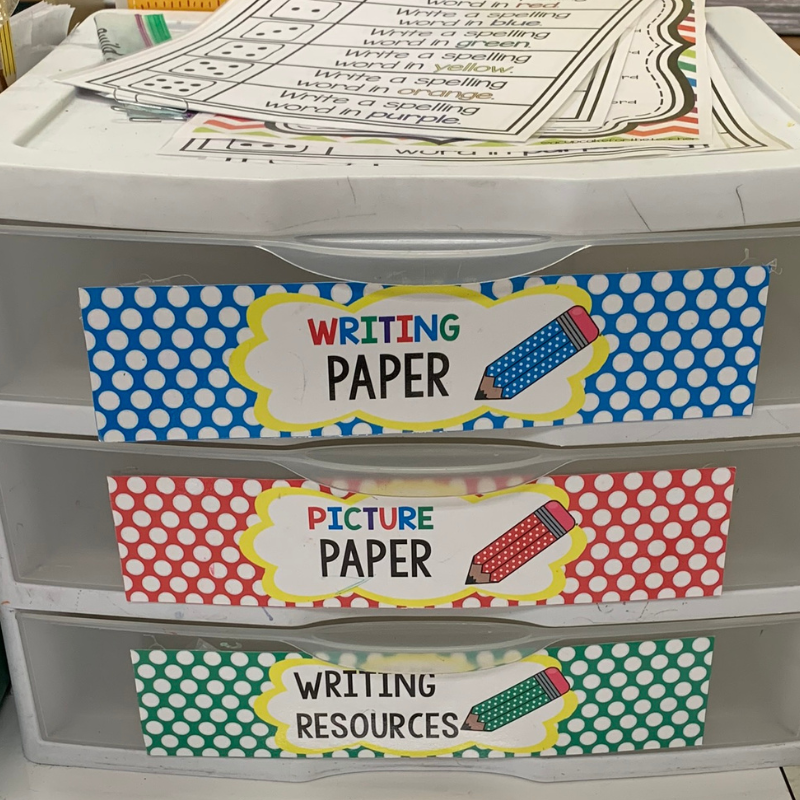
What type of writing paper should preschoolers use?
An early childhood writing center for preschool-aged students should have blank paper for students to begin exploring drawing pictures and writing. Paper can be white computer paper or even colored construction paper.
For preschool students, I recommend sticking to unlined and lined paper to start with. Or if the paper they are using has lines (like a spiral notebook or composition book); don’t require them to use those lines for writing. Those lines are way too small for them at this age.
You can read more about writing with preschool students in this post, Getting Started with Preschool Writing Journals.
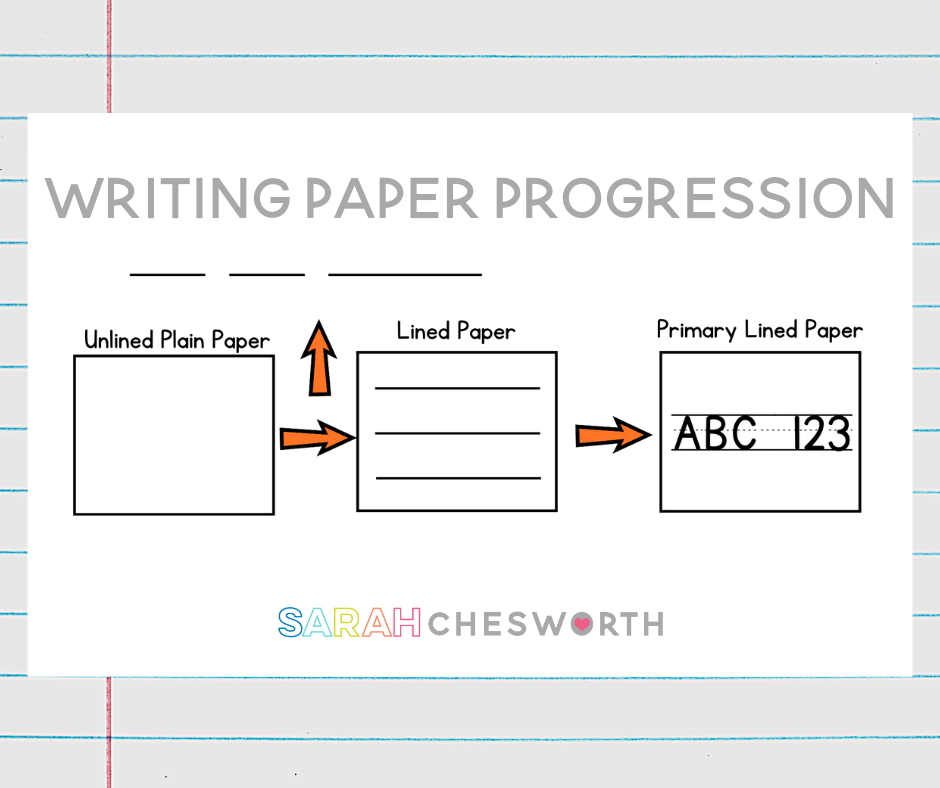
When should children start writing on lines?
Usually closer to Kindergarten age, little ones are ready to start writing on lined paper. By lined paper, I don’t mean notebook paper. I mean just a simple line or two on a piece of paper with enough space for them to write. I usually start the transition by writing enough blanks for the message they want to say. For example, if a child wanted to write, “I like apples.” I would write three blanks for their three words.
After students have a really solid grasp on writing all of the uppercase and lowercase letters, they are usually ready for primary lined paper. You will usually start seeing this type of writing paper closer to first grade. This paper helps children to make their letters the correct size and focus on correct letter formation.
Dry Erase Boards
Dry-erase boards can be a great tool for your writing center. These dry-erase boards are a wonderful writing tool because one side is blank and the other side has primary lines. I also recommend using skinny dry-erase markers because they feel similar to a pencil.
Picture Word Cards
Many times students are intimidated by writing because they don’t want to spell words wrong. Environmental print can also be a wonderful resource for students. You can read more about this in the post, Environmental Print in the Preschool Classroom.
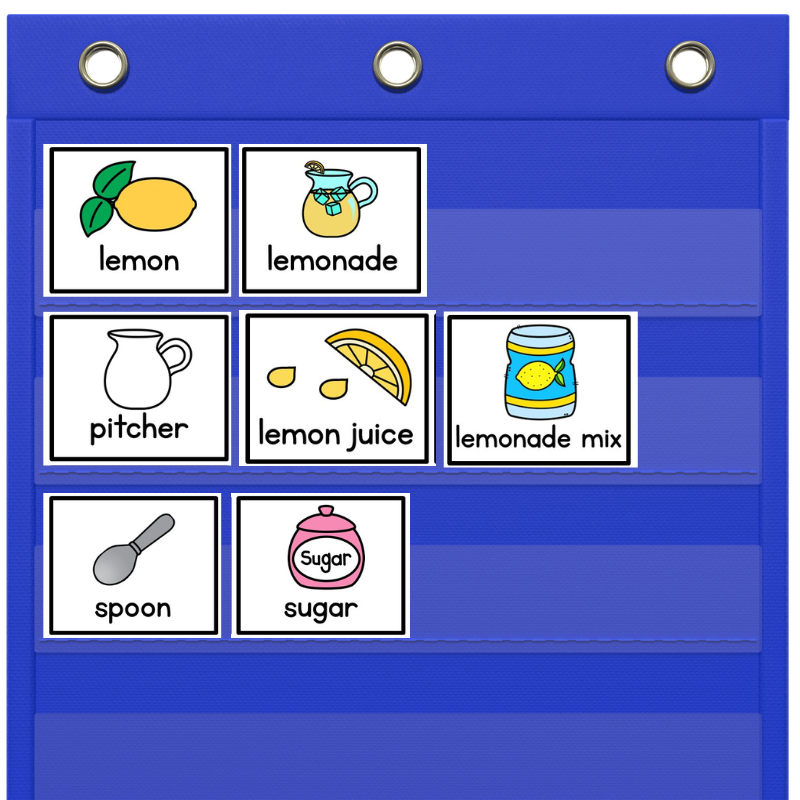
Special cards can also be added to the center that coordinate with what students are learning in a pocket chart. I also find it helpful to include students’ names and pictures on index cards too.
Magna Doodles
Magna Doodles are a great writing tool for preschoolers especially because they aren’t messy! The small size is also not as intimidating for younger children. These are also wonderful to use for whole-class writing instruction too.
Magnetic Letters
Magnetic letters can also be added to the writing center. Many tactile learners benefit from building words before writing them.
Printables
Various printables can be helpful depending on the needs of your students. This alphabet chart is a free printable you can print and use with your students right away!
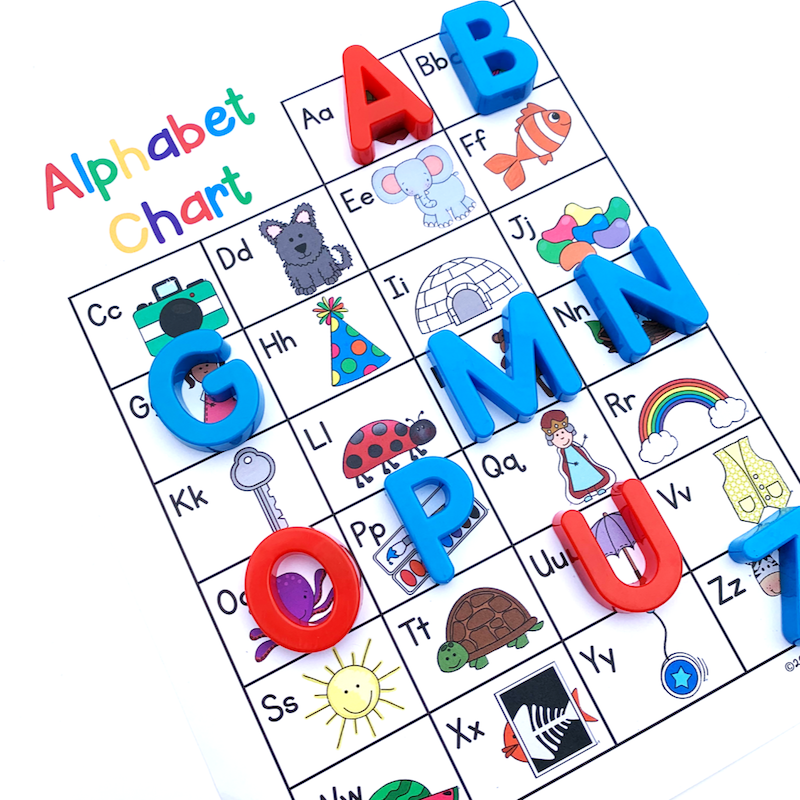
Stencils
Letter stencils are wonderful for children to trace and practice writing letters. Picture stencils are another fun addition too!
Envelopes
Writing is a form of communication! Once students understand this concept they often enjoy drawing pictures and writing letters for others! Envelopes can encourage students to share their writing with others.
Stamps
Alphabet stamps are another fun way to encourage letter exploration and writing! Be sure to use washable ink pads too. Check out other fun ideas for using stamps in this post, Word Work Stamping Activities.
Stickers
Stickers can be a fun writing tool for encouraging creativity. Simply give students a certain number of stickers to use in a picture, then encourage them to write a story using the stickers.
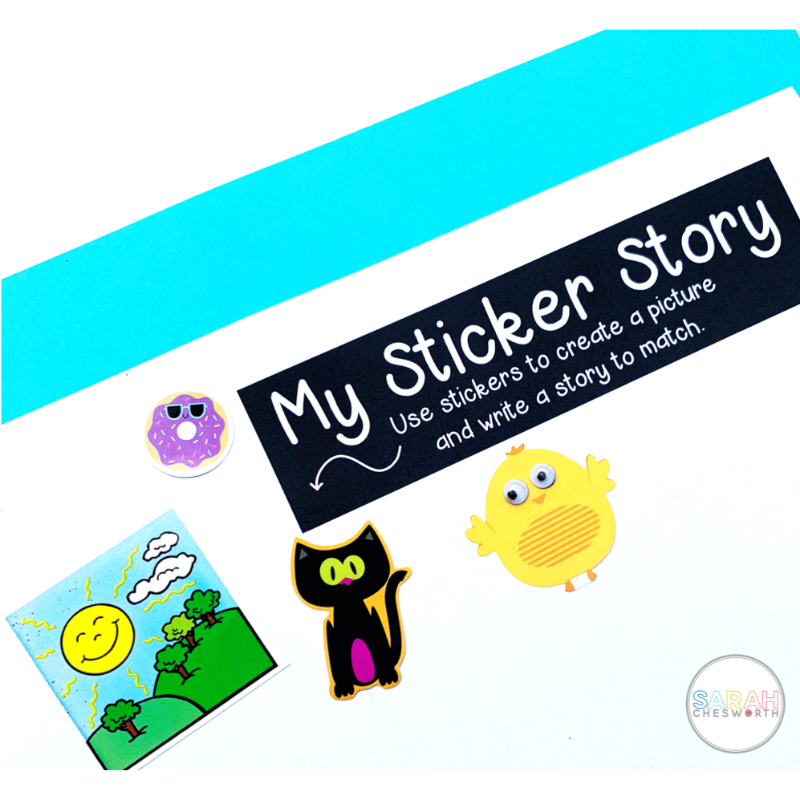
Play Dough
Playdough is a popular writing center choice for the beginning of the school year because it helps strengthen finger muscles and build fine motor skills. Playdough is always a big hit! I just recommend providing students with play dough mats and some perimeters for using this tool in the writing center.
Clipboards
A writing center set of clipboards can be a great investment! Students will enjoy getting to write in a different place in the classroom besides sitting in a chair at a desk or table.
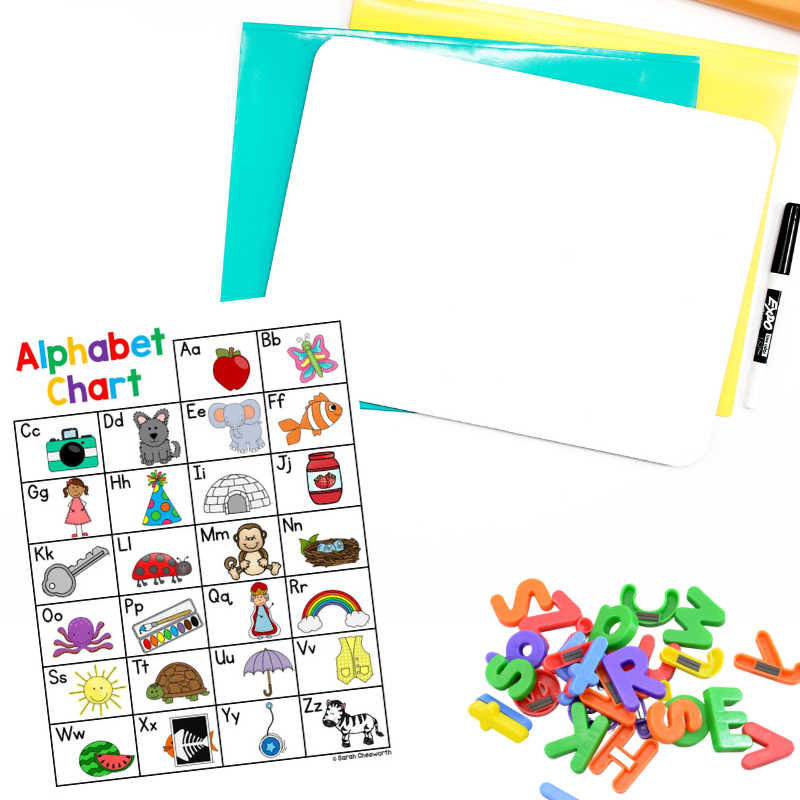
Tips for Teachers
Here are some tips for setting up a successful writing center in your classroom:
Keep it organized. Make sure there are plenty of supplies for all of your students and that they are accessible and easy to find. Writing tools can easily be arranged in cups and bins.
Provide choices. You don’t have to have every resource available in the center at all times—you can rotate certain materials or provide access to them only on certain days or times of the year. For example, you might keep a collection of stickers in the center but only allow students access to them once a week so they don’t get too familiar with them or lose interest in using them.
Help with idea generation. Some students need help with writing ideas. You can make a list together as a class of writing ideas that students can choose from.
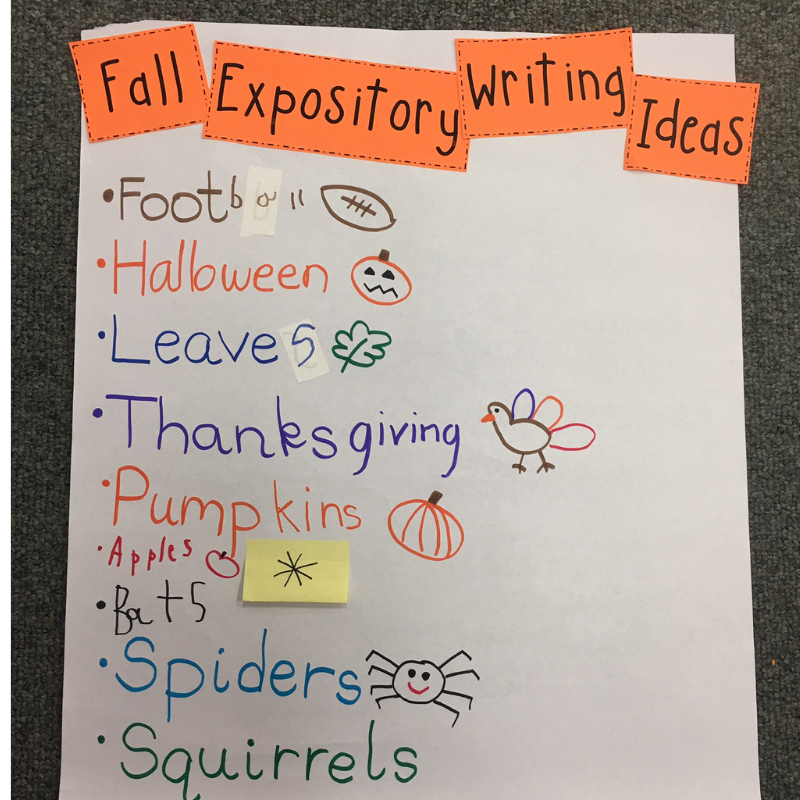
Ask parents for needed materials. Parents are constantly getting free notepads, pens, and other items that would be excellent writing materials. Don’t be afraid to share your needs with your classroom parents.
The Writing Center Home-School Connection
It’s important for students to see writing all around them, including at home! Encourage parents to include their children in simple writing tasks like signing their name on a card or helping with a list for the grocery store.
I also recommend sending home simple printable resources that parents can use at home like an alphabet chart or even a Writing Words Page.
Students also enjoy writing about themselves, their family, and their experiences. You can ask parents to send pictures that can be added to students’ writing folders to help children as they brainstorm ideas for writing.
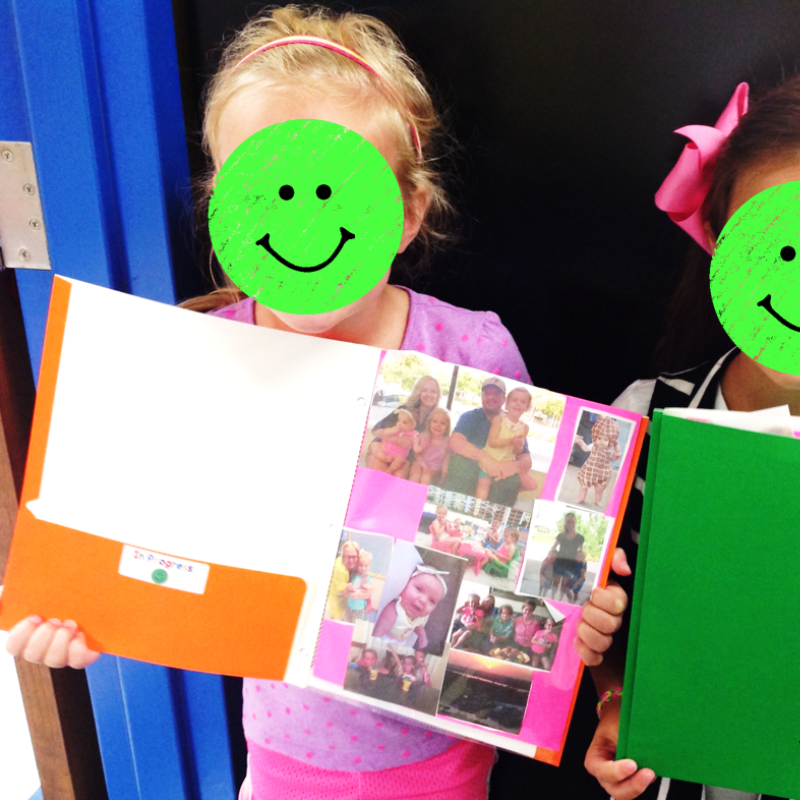
What Do Children Learn in a Writing Center?
A writing center helps preschool students develop pre-writing and drawing skills. As students grow in their writing abilities, the writing center provides a safe place to practice writing skills and express thoughts using pictures and words.
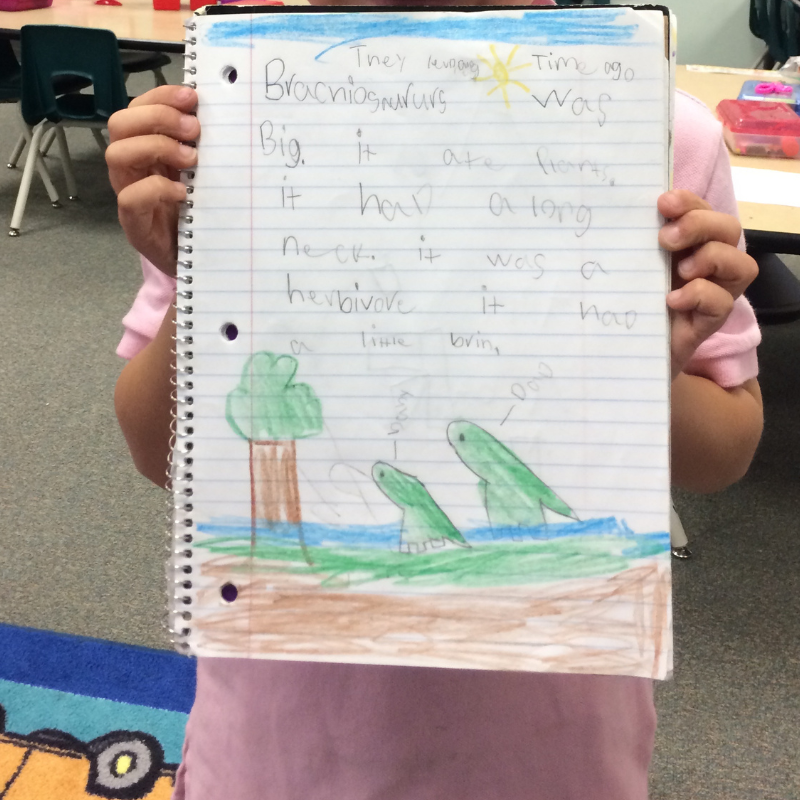
Elementary ages students may benefit from some additional structure in the writing center. Here are a few ideas of things students can create in a writing center:
- Simple books (add a stapler)
- Class books
- Journal Prompts

How Do You Motivate Students to Write?
Writing should be a positive experience for everyone. Students should feel excited to be able to communicate in this new way, not stressed about making the letters perfect or spelling everything right. You can motivate students by providing activities that are fun, developmentally appropriate, and allow them to be successful. Focus on building the necessary pre-writing skills.
Students also like having things that belong to them. Consider giving each child a writing journal or writing folder for students to use while visiting the station.
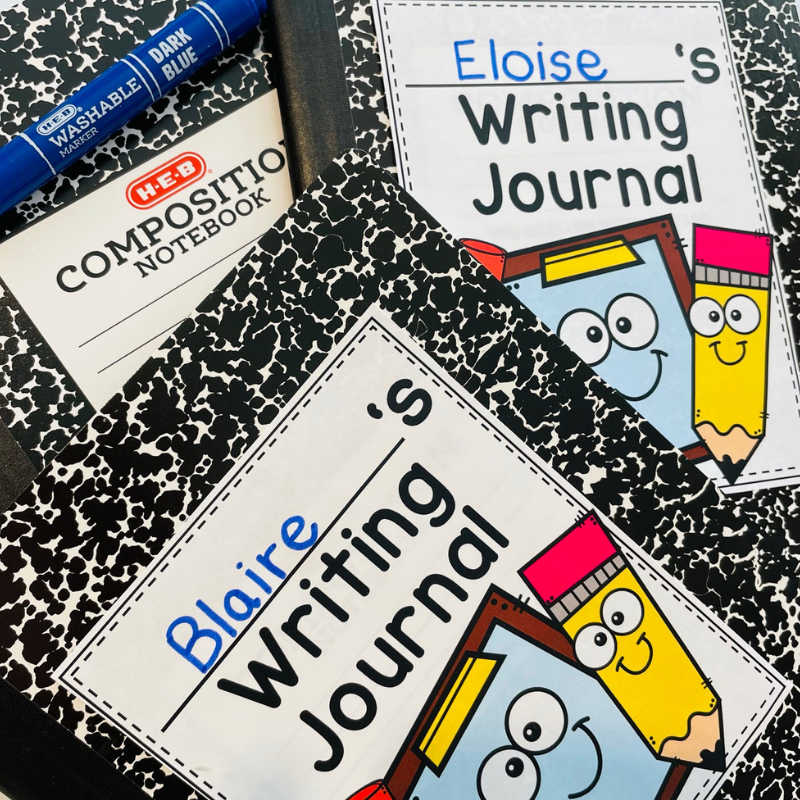
What Items Can Be Added to the Dramatic Play Area to Promote Interest in Writing?
Including print-rich materials in your dramatic play center will increase student interest in writing! Here are a few ideas of items that could be added to the dramatic play area:
- Menus from local restaurants
- Grocery ads
- Magazines
- Newspapers
- Notepads for creating lists
- Books
You can read more about setting up your classroom in this post, Preschool Classroom: Intentional Design and Classroom Setup.
Writing Centers: The Bottom Line
All classrooms should have a writing center for students to build a love of writing that will last forever!
